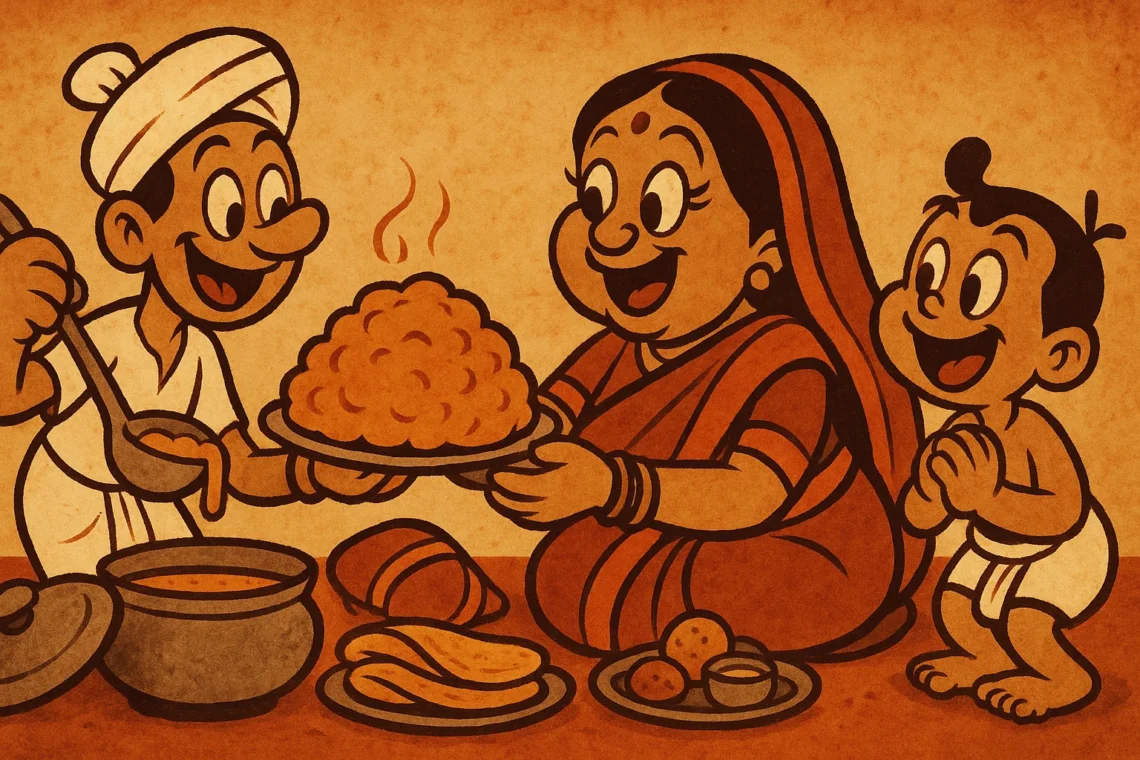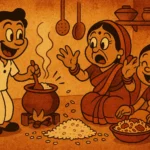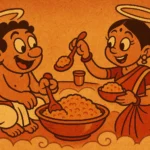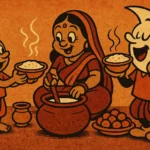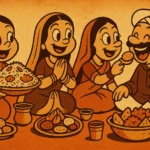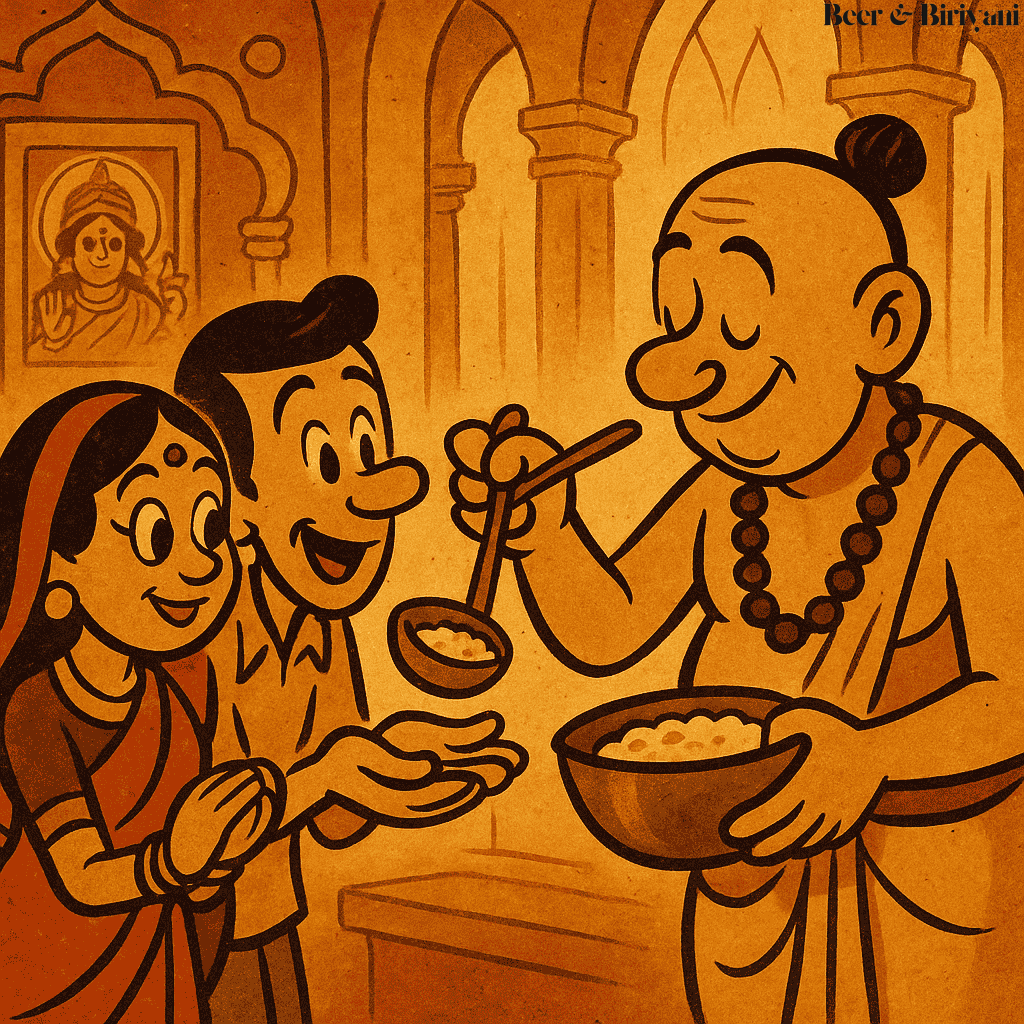There’s a quiet moment right after the temple bells stop ringing, the incense settles in the air, and the crowd begins to shuffle out. That’s when the real anticipation kicks in. Not for the darshan, which is done. Not for the archana, which is completed. But for the prasadam. That sacred, warm, unassuming offering that somehow tastes better than anything made at home. And no matter how crowded the temple, no matter how humble the budget—prasadam portions are never small.
Prasadam is not just food. It’s divine distribution. It is what the gods have tasted first, and what you now receive as a blessing. Which is probably why it’s always served with such generosity. You might have stood in line for an hour, but when the man at the back of the sanctum ladles hot pongal into your leaf bowl, he doesn’t ask how hungry you are. He just scoops. He knows. The portion is always enough—and then a little more.
The Temple Serving Style
There’s a method to the madness. In South Indian temples, pongal or sambar rice is dished out by volunteers who move like a well-rehearsed orchestra—one hand on the ladle, the other on the next leaf or plate. In North Indian mandirs, it might be a scoop of suji halwa or a handful of boondi, served from a massive steel bowl that has likely been around longer than you. But the rule remains the same: no stingy servings. Because prasadam isn’t rationed. It’s shared. And its abundance is part of its sanctity.
You don’t weigh or measure prasadam. You don’t calorie count it. You don’t say, “Bas itna hi?” You receive it with cupped palms, slightly bowed head, and a quiet sense of reverence—broken only by the soft smile you share with the person beside you when you both taste that ghee-laced sweetness and think, “How is this always so perfect?”
From the Divine to the Devotee
The miracle of prasadam is that it manages to taste exquisite despite the scale. It’s made in giant pots, stirred with ladles the size of cricket bats, cooked over open fires in temple kitchens where recipes are never written but always remembered. Yet each bite is just right. Maybe it’s the simplicity—no frills, no garnish, just devotion and ghee. Or maybe it’s because food, when offered to the divine, picks up something we can’t explain. A kind of spiritual seasoning.
In places like Tirupati, the laddu prasadam has its own factory-level operations. Conveyor belts, workforce shifts, packaging systems—and still, each laddu tastes like it came from someone’s grandmother’s kitchen. In small village temples, you get tamarind rice on banana leaves, sometimes handed out straight from someone’s hand. But no matter the scale or setting, there’s never a sense of “limited supply.” There is always enough. Enough for you. Enough for the person behind you. Enough for the stranger who showed up late but was still handed a warm packet wrapped in newspaper.
The Leftovers Are Also Sacred
In many homes, prasadam is brought back and shared. Wrapped in banana leaf, or packed in little containers, it’s never wasted. You tear pieces of chapati to scoop up temple aloo sabzi, eat a spoon of halwa straight from the foil, and everyone gets a bite—even if it’s tiny. Leftover pongal is reheated, but never too much. Because prasadam doesn’t need volume to feel full. One mouthful carries the mood of the whole temple. One spoon brings the bells, the crowd, the chants, the incense—all of it—back into your mouth.
More Than Food, Always
Maybe that’s why prasadam feels bottomless. Because it isn’t just made from rice and sugar. It’s made from repetition and ritual. It’s served not from a place of abundance, but from a place of belief. That the gods will provide. That the kitchen will stretch. That the volunteers will keep scooping until the last person in the queue is fed.
There’s no “portion control” in faith. Just open palms, open hearts, and enough food to fill them both.
Born in Mumbai, now stir-frying feelings in Texas. Writes about food, memory, and the messy magic in between — mostly to stay hungry, sometimes just to stay sane.

